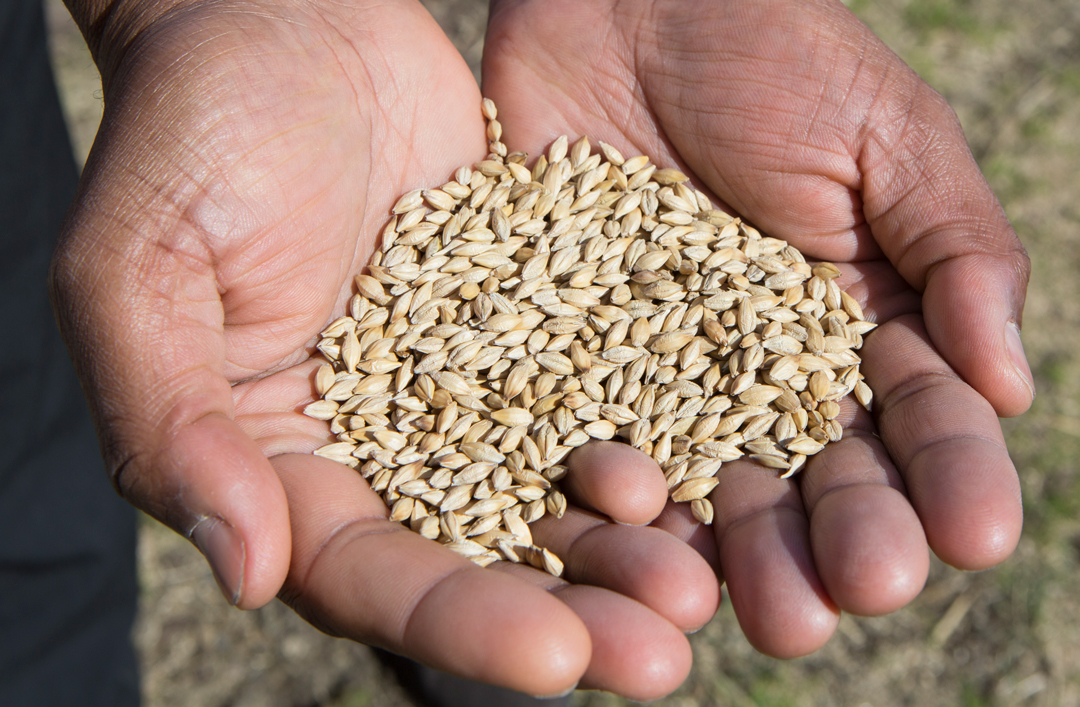MISSION CONTROL
UNCERTAIN TIMES REQUIRE RELIABLE GRAIN MARKETING
This is a time of heightened uncertainty in global agricultural trade, but the Canadian grain industry is well positioned to push through, given its strong international marketing apparatus.
Though neither federal party may care to admit it, the Trudeau Liberals have by all indications picked up where the Harper Conservatives left off in doggedly building international free trade opportunities. As former federal agriculture minister and recent Canadian Agricultural Hall of Fame inductee Gerry Ritz stated in our recent discussion (page 42), there’s one central way to maintain Canada’s farm-product reputation: “Keep doing the work.”
Effectively initiated by the Ritz-led dissolution of the Canadian Wheat Board monopoly, the creation of the Canadian new crop missions in 2014 formally unified the outreach efforts of the grain value chain. Government ag bodies, crop groups and corporations team up on these annual, international forays, creating and maintaining trade relationships with their counterparts around the world.
The value of these missions to the farm bottom line is evident, with new or renewed purchase agreements being the most tangible benefit. Beyond these, maintaining Canada’s brand reputation as a producer of high-quality grains is critical in an aggressively competitive global marketplace. This fact was hammered home repeatedly by those we interviewed for “Going global” (page 32), our in-depth examination of the new crop missions program. Likewise, they stressed that none of Canada’s ag export competitors field such a comprehensive and effective strategic marketing team.
The program gives our grain industry a serious competitive edge. Maintaining direct trade connections and continuity in grain sector messaging and crop missions ensure the world literally hears the voice of Canadian grain farmers. Playing a central role, farmers accompany these delegations and give foreign buyers insight into growing practices that matter deeply to the consumers who purchase food products in nations from Colombia to Japan.
New crop missions are also a valuable tool in addressing market access issues that inevitably crop up. While addressing long-term trade goals, they’re a robust mechanism for addressing uncertainty.
While our fall cover story (page 24) examines how geography and geology conspired over millennia to produce Alberta’s unique agricultural equation, much of this issue focuses on the bedrock topic of research. In “Irrigation innovation” (page 22), for example, we talk with scientists engaged in drip-irrigation studies aimed at maximizing efficiency in water use while improving cereal crop yield. One of these experiments is being carried out by the Mackenzie Applied Research Association with the aid of Alberta Wheat Commission funding and has shown promising results. It has also generated interest among farmers in implementing irrigation projects and modifying existing systems.
On the barley side, the latest annual Canadian Malting Barley Technical Centre Recommended Malting Barley Varieties List features CDC Bow and AAC Connect, two entries not previously commercially available. In “From malt to mug,” (page 10), we compare the variety needs of farmers with those of maltsters and brewers and follow CDC Bow to its use by an Edmonton microbrewery in producing a new pale ale. As well, we examine the Getting to Growth action plan developed by Alberta Barley and its industry partners (page 7).
In these pages, you’ll also find a comprehensive discussion on tillage trends (page 28). As agronomic needs have evolved and no-till farming has, for sound reasons, remained the status quo, what place does the practice have in contemporary Prairie agriculture? And rounding out our fall roster is a selection of stories focusing on agricultural learning facilities and initiatives including the Agricultural Enterprise Management program now in its first year at Lethbridge College (page47). Also focusing on educational opportunities, the last word goes to Lakeland College in an end-page tale of the school’s establishment more than a century ago.







Comments